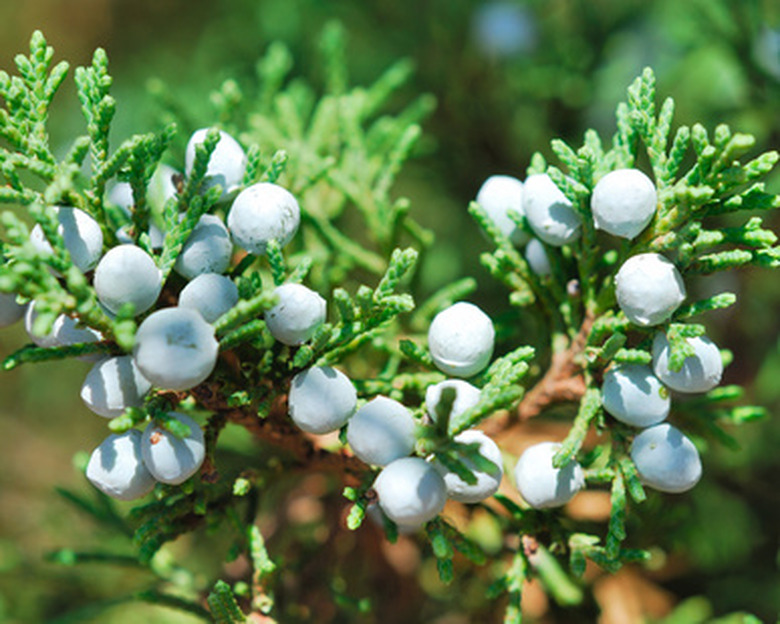How To Identify Juniper Trees
Juniper trees are members of the cedar family and the wood of the juniper is used for many purposes. Many people don't realize that juniper trees are a cedar tree because they are an evergreen, unlike the rest of the cedar family. Juniper trees are very resilient and can last through times of drought. Juniper trees can grow just about anywhere and thrive in a variety of conditions.
Step 1
Examine the tree or shrub for thick needles. The juniper tree is an evergreen and has soft needles instead of leaves. The needles of a juniper tree are rather short and grow in clusters close to the branches. There are different types of juniper trees and they range in height from low ground-covering bushes to trees that grow to approximately 30 feet.
- Juniper trees are members of the cedar family and the wood of the juniper is used for many purposes.
- Juniper trees are very resilient and can last through times of drought.
Step 2
Look for small, blue berries at the end of the branches. These berries are what identify juniper trees from other cedar trees. The berries are very strong with cedar smell.
Step 3
Inspect the branches and trunk for sap. Juniper trees leak a sticky, resinous sap from the trunk and along the branches. This sap will smell strongly of aged cedar.
Prune Juniper Trees
Look at your juniper for pruning needs in early spring just before the new growth begins; early spring is the best time to prune junipers. Identify areas you would like to prune back and mark with ribbon individual branches to be cut. Identify the "dead zone" of your juniper — the inside of the plant that is full of bare branches and wood. Cutting to this type of shoot will make the tree look younger and healthier while maintaining a pleasant shape. Cut any completely dead or broken branches back to the main trunk using loppers, as the juniper is wasting energy on these branches that could be better used to promote new growth and keep the remaining branches healthy. Make sure the base of the juniper is wider than the top.
- Look for small, blue berries at the end of the branches.
- Look at your juniper for pruning needs in early spring just before the new growth begins; early spring is the best time to prune junipers.
